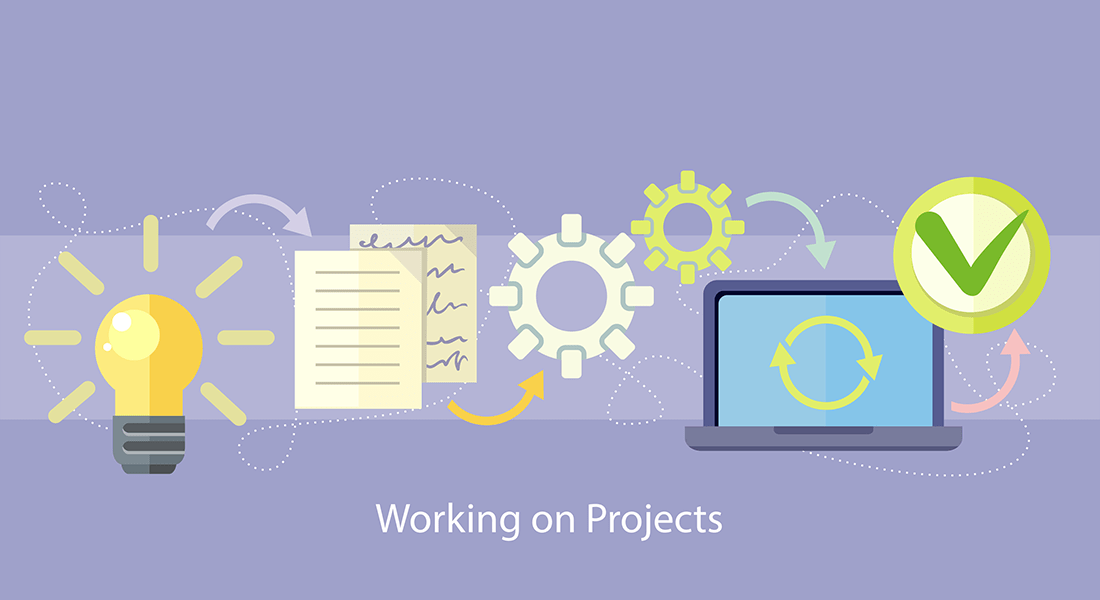What Goes into a Project Scope Document?

What is an e-learning project scope document? When is it finalized? What are the details it specifies? Not sure of the answers? Check out this blog.
A project scope document is the first thing that is drafted after an e-learning project is initiated. This is inarguably the most important part of the project. A written approval of the scope document by the client is required before starting the project. This document has to be adhered to, if the project has to be executed on time, within the stipulated budget. Here is a list of details included in a project scope document:
Project background and description
Details of the client’s business needs which will be addressed by the e-learning project will be given here. This will help understand the context in which the client is undertaking the project, and this context helps form the basis for its evaluation once it is completed. For instance, if the client wants to provide product training for sales personnel, to improve sales, then the e-learning will be focused on this objective, and help sales personnel present the product in the right way to potential customers. Results will be evaluated in terms of increased revenues.
Project objectives and goals
The main objective should be defined here, i.e. what the client hopes to achieve at the end of the course — increased sales, better compliance awareness, or fewer customer service calls. Once the objectives are clear, it would be easier to develop an effective course that will meet the client’s business needs and bring results that have a long term impact. The parameters that the vendor should adhere to are also defined here. These include the cost of the project, its timeline, and quality baselines.
High level requirements from the client
Special requirements of the client are given here. This can be regarding a specific GUI design, use of a particular authoring tool, the amount of interactivities in the course, special animations, audio, and certification of completion and/or tracking on the LMS, and more.
Assumptions
This section of the project scope document contains a list of ‘certain’ assumptions that influence project costing and planning. These include the duration of the course, duration of the course audio, and the time required by the client to review the project.
Constraints
These refer to the restrictions the project team may face, that can impact their performance and restrict the options available to them. These include the budget of the project, pre-defined launch date, client’s availability for review, and the choice of development tool for the course.
Project risk
The risks the project faces in terms of factors that can affect the project scope, cost, or schedule is termed project risk. The project scope document should highlight risks that can be anticipated during the course of the project. It should have a risk management plan that can effectively deal with exigencies. Some of these risks are delay in client reviews, non-availability of subject matter experts, or changes in audio narration at every stage.
Project deliverables
Deliverables need to be clearly defined in the scope document. Every project follows a pre-defined process, so the deliverables at each stage of the project need to be clear.
Project staffing
The team members who will be working on the project are mentioned here. Also, the roles and responsibilities of the project manager and other team members are listed. The details of people, who will be involved from the client’s side such as the SMEs, reviewers, or point of contact, will be included.
Estimated timeframe
The project scope document will also give details of the estimated development time for the course, including the time taken for client reviews. The time estimate is given after deciding on the project development process and taking into account the time required for completing each stage of the process.
Estimated budget
Details of the total cost of resources that will be used for completing the course are specified in this section. Resources here include both physical and intangible assets such as the use of technology, data, and expertise.
A good project scope document is a critical step in any e-learning project. Finalizing it can help you avoid problems once the project is underway. It also helps match what you create with the needs and expectations of the client. Remember to lock-in the project scope document with the client before the project takes off, to avoid obstacles later.





